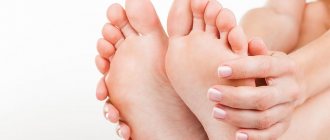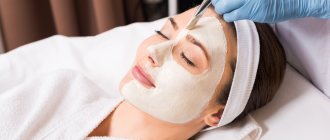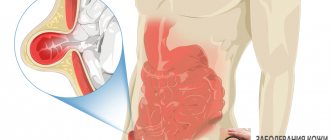What your facial skin tells you during pregnancy
Often, you can guess that a woman is expecting a baby even before the characteristic roundness appears in the abdominal area. Just look at it: very often the skin of the face changes noticeably in the early stages of pregnancy. This is due to hormonal changes occurring in the body. Such changes do not always please the expectant mother, but it is important to understand that they are completely natural.
FACE COLOR AND PIGMENTATION
The first thing you can notice is changes in facial skin tone during pregnancy. Often the expectant mother’s cheeks are too brightly colored. This indicates an increased load on the blood vessels, which is quite natural during pregnancy. If a woman already had freckles, they may become even more noticeable. Brown-haired and brunette women often encounter chloasma, popularly known as the mask of pregnant women. In this case, individual areas on the forehead, cheeks, chin, as well as on the back of the nose and under the lip darken. Because of this, the skin of the face acquires an uneven shade. Skin pigmentation in expectant mothers is completely natural: this is a consequence of increased levels of progesterone in the body. But don’t think that such changes will remain forever. Even if the skin of the face deteriorates during pregnancy, as a rule, after the birth of the baby, it gradually returns to its previous shade. So it is not necessary to resort to complex procedures to combat pigmentation, just be patient.
SWELLING
Many women expecting a baby experience swelling. They are especially noticeable on the face. Due to swelling, it becomes larger and rounder. Such changes can be expressed to varying degrees. How to determine whether swelling has appeared? To do this, gently press on the skin with your finger. If a hole has formed on it, most likely, we are talking about the presence of edema. In this case, it is important to consult with your pregnancy doctor in a timely manner. The specialist will adjust the diet and also prescribe treatment, if necessary.
EXCESSIVE HAIR
At the end of the first trimester of pregnancy, many women notice that the amount of hair on their body has increased. Noticeable hairs may also appear on the face. This is due to the increase in the level of androgens, sex hormones, that occurs during this period. To remove facial hair, you can use tweezers, sugar or wax hair removal. However, during pregnancy it is not recommended to use chemicals to combat unwanted vegetation. In fact, it is not at all necessary to remove hairs that have grown on your face and body: they will disappear on their own about six months after giving birth.
RASHES
Many women complain that their perfectly clean skin has deteriorated during pregnancy: pimples have appeared on it. Rashes can be associated with both an allergic reaction and hormonal disorders. When it comes to allergies, a small, clearly visible rash usually appears on the skin, which may be accompanied by itching. With hormonal changes associated with an increase in progesterone levels, the work of the sebaceous glands is activated. As a result, acne may appear on a pregnant woman's face. The occurrence of such problems is facilitated by an unbalanced diet, genetic factors, and lack of fresh air. If acne appears, you should consult a dermatologist, making sure to inform the specialist about your ongoing pregnancy. The doctor will select therapy taking into account the woman’s condition: not all components of medicinal creams, lotions and other products are approved for use during this period.
DOES THE CONDITION OF THE SKIN ALWAYS CHANGE FOR THE WORSE?
You should not think that carrying a baby will certainly lead to a deterioration in the appearance of the expectant mother. It often happens that the skin of the face during pregnancy glows with health and beauty! Hormonal changes can improve cell function and have a rejuvenating effect on the body. In addition, the expectant mother has the power to properly care for her skin to help maintain its elasticity, softness and healthy tone.
HOW TO PROPERLY CARE FOR YOUR SKIN DURING PREGNANCY
Use suitable cosmetics. During this period, it is especially important to study the composition of cosmetics. To cleanse the skin, it is recommended to use mild products without aggressive components. If rashes appear, the best option is doctor-recommended products with antiseptic ingredients. You can use cosmetics designed specifically for pregnant women.
Protect your skin from the sun. At any time of the year, it is important to apply cream with SPF factor before going outside. Exposure to ultraviolet light can increase pigmentation, which appears under the influence of hormonal changes.
Choose gentle procedures. Deep peelings and traumatic mechanical facial cleansing are not suitable for pregnant women, because during this period the skin becomes especially sensitive and the pain threshold decreases.
Watch your diet. It is recommended to include foods rich in polyunsaturated fatty acids, fiber, and vitamins in the menu.
Lead a healthy lifestyle. Regular walks in the fresh air, good sleep, moderate physical activity - all this is beneficial not only for the skin, but also for the health of the pregnant child.
Effect of pregnancy on kidney function
Renal blood flow increases and glomerular filtration increases (maximum in mid-pregnancy) - associated with the excretion of metabolic products of the woman and the fetus.
The permeability of the kidneys to protein and carbohydrates increases: proteinuria (protein in the urine), glucosuria. The excretion of 140 mg/day of glucose in the urine is considered the upper limit of the physiological norm. Peak glucose secretion was detected at 9 months of pregnancy.
The peristaltic function of the ureters is sharply suppressed, as a result of which they expand and urine is retained in them. Atony of the ureters leads to impaired drainage of urine from the pelvis, which creates favorable conditions for the development of pyelonephritis in pregnant women. In the postpartum period, these phenomena soon disappear.
Methods for removing red moles
If the mole does not bother you in any way and is not located in high-risk areas, that is, on the arms, feet, or head and back, then it is quite possible not to remove it.
If the hemangioma bothers you, then it can only be removed by specialists, a dermatologist or oncologist. You should not take the risk of removing a nevus from a cosmetologist and exposing the incorrectly removed hemangioma to the risk of growth or the risk of infection.
There are several common procedures for removing them.
- Electrocautery. The nevus is burned with an electric current delivered using a small instrument. The grounding block will be placed somewhere so that the rest of the body is not exposed to electricity.
- Cryosurgery. The mole is frozen using liquid nitrogen. It is destroyed by extreme cold. Liquid nitrogen is sprayed for 10 seconds, the problem is solved in one session. This method is quick and relatively simple. The wound also does not require special care.
- Laser surgery. This procedure uses a concentrated yellow laser beam that emits enough heat to destroy the nevus from the inside. This method is quick and is used on an outpatient basis, meaning it does not require subsequent hospitalization. Depending on how many moles will be removed, one to three procedures may be required. There may be small scars that will disappear within 10 days.
- Surgical method. This is the process of removing a nevus from the upper part of the skin by cutting the lesion and then applying sutures. It is not a frequently used method, and after such an intervention there are scars.
In any case, if you have concerns and questions about why red moles appear, you need to see a doctor, if only to reassure yourself with good tests. Because unexplained questions create stress, which in turn contributes to a decrease in immunity. Be healthy.
Types and classification
Moles have two main types:
- Pigmented. These include flat, often brown, nevi.
- Vascular, which are formed from changes in the structure of blood vessels.
They are also:
- Congenital - divided by size: small, medium and large.
- Acquired, divided into three types depending on the location of melanocytes in the layers of the epidermis.
- Hanging ones, they are also called papillomas.
There are invisible nevi that appear changing color over time. Also wandering, which change their location, appearing in one place or another. It is advisable to keep track of the location of your moles.
Red moles in children
For most people, the bulk of moles appear in the first 20 years of life, then the formation of moles (nevi) subsides. They also tend to sometimes disappear on their own, and this happens due to the fact that the blood vessels supplying the mole dry out or become clogged. One in 100 newborns are already born with small red moles on their body, and they are considered more prone to change and develop into melanoma. This red neoplasm that rises slightly above the surface of the skin is called a Spitz nevus.
Children can also be born with large blue spots on their backs; they are called Mongolian spots and are most often found in children with Asian roots. Any moles are often injured, especially in childhood. This can cause complications, so it is advisable to sometimes see a doctor, and also try to protect children from such injuries.
Serious consequences
During the inflammatory process that accompanies a rash during pregnancy, primary elements arise, and then secondary ones, which aggravate the disease itself, reflecting the general symptoms. For example, eczema is a chronic inflammatory skin disease that causes a rash and other erythematous signs. The cause is considered to be an immune reaction to various irritants.
Sometimes the tendency to eczema is inherited and is expressed by special sensitivity to certain provoking factors:
- Mechanical;
- Thermal.
When eczema forms, the following have an important effect:
- Pathologies in the nervous system.
- Diseases associated with internal organs.
- Endocrine system disorders.
A small rash may soon disappear, after which itchy elements remain that secrete serous exudate. Weeping processes may occur on the skin surface, which are followed by the appearance of scabs that are yellow-brown in color.
Chronic diseases are expressed by severe peeling, cracking, severe dryness and the fact that the skin becomes thicker. Eczema is most often localized on the hands, in the shin area, and sometimes on the face.
Methods for diagnosing skin diseases:
- Diagnosis of skin diseases
- Diagnosis of skin diseases at home
- Diagnosis of allergic skin diseases
- Diagnosis of bacterial skin diseases
- Diagnosis of viral skin diseases
- Diagnosis of hair diseases
- Diagnosis of nail diseases
- Diagnosis of skin tumors
- Skin scraping
- Blisters on the skin
- Dermatoscopy
- Demodex tests
- Diagnosis of sexually transmitted infections
- Mushroom tests
- Skin scraping
Effect of pregnancy on liver function
The liver during pregnancy is in a state of high functional tension. However, in healthy women during the physiological course of pregnancy, the functioning of the liver is not impaired.
Noted:
- slight increase in liver size in the absence of pronounced histological changes;
- there is a decrease in the antitoxic function of the liver;
- the level of protein in the blood serum decreases, by the time of childbirth it can reach 60 g/l;
- the result of changes in the composition of serum proteins is an increase in ESR;
- blood clotting and fibrinolysis changes. These changes help increase blood clotting ability.









